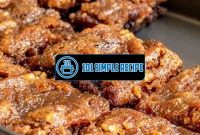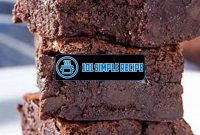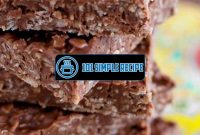Are you a chocolate lover craving a delectable treat? Look no further! This article will guide you through the process of making simple and delicious homemade chocolate truffles without the need for condensed milk. With just a few basic ingredients and some easy steps, you’ll soon be enjoying rich, creamy truffles that melt in your mouth. Say goodbye to store-bought chocolates and hello to a homemade delight that will impress your friends and family. Let’s dive right in and discover the joy of making your own chocolate truffles!

Understanding Chocolate Truffles:
Chocolate truffles have a rich and decadent reputation in the world of confectionery. These bite-sized treats are adored by chocolate enthusiasts for their smooth and creamy texture, as well as their intense chocolate flavor. In this article, we will explore the history, characteristics, and types of chocolate truffles, and why they have become a beloved treat for people around the world.
The Origins of Chocolate Truffles
Chocolate truffles originated in France in the late 19th century. The exact origins of the name “truffle” are somewhat disputed, but it is believed to be inspired by the resemblance of the chocolate ganache center to the prized mushroom truffle. The first chocolate truffles were made by a French chef named Auguste Escoffier, who accidentally poured hot cream over a bowl of chocolate chunks instead of the usual truffle filling. This resulted in a velvety smooth mixture that became the foundation for the modern chocolate truffle.
From France, the popularity of chocolate truffles quickly spread across Europe and eventually to the United States. They became synonymous with luxury and indulgence, often associated with special occasions and celebrations. Today, chocolate truffles can be found in various forms and flavors, from classic cocoa-dusted truffles to unique combinations with spices, fruits, or liqueurs.
The Components of a Perfect Chocolate Truffle
To create a perfect chocolate truffle, several key components are required. The first and most crucial ingredient is high-quality chocolate. Dark, milk, or white chocolate can be used, depending on personal preference. The chocolate is melted and combined with a rich and silky ingredient such as cream or butter to create the luxurious ganache filling. This ganache is then shaped into small balls, often rolled in cocoa powder or finely chopped nuts, giving the truffle its signature appearance.
Another essential component of a chocolate truffle is the flavoring. While the classic truffle is chocolate-focused, other flavors can be added to enhance the taste. These can range from extracts like vanilla or almond, to more adventurous options like chili, coffee, or citrus zest. The flavorings are added to the ganache during the mixing process, creating a harmonious blend of tastes.
Types of Chocolate Truffles
Chocolate truffles come in a variety of forms, each offering a unique experience for chocolate lovers. Some popular types include:
- Classic Truffles: These truffles feature a smooth ganache center enrobed in a thin chocolate shell. They are often dusted with cocoa powder or decorated with chocolate shavings.
- Liqueur Truffles: These truffles are infused with a variety of spirits or liqueurs, such as rum, whiskey, or Grand Marnier. The alcohol adds a distinctive flavor and complexity to the truffle.
- Fruit-Filled Truffles: These truffles have a fruity surprise at their center, with fillings like raspberry, cherry, or orange. The fruity burst complements the richness of the chocolate.
- Nutty Truffles: These truffles are made with a blend of finely chopped nuts, such as almonds, hazelnuts, or pistachios. The nuts add a satisfying crunch and nutty flavor to the truffle.
Chocolate truffles have a long and cherished history, delighting chocolate lovers for over a century. Whether enjoyed as a personal indulgence or given as a gift, these homemade treats are a testament to the artistry and innovation of chocolatiers. So, embrace the art of truffle-making and savor the rich, velvety goodness of these delightful confections.
Benefits of Making Truffles without Condensed Milk
Discover why opting for a recipe without condensed milk can lead to a more delicate and customizable truffle.
Healthier Alternatives to Condensed Milk
When it comes to making homemade chocolate truffles, traditional recipes often call for condensed milk. However, opting for a recipe without condensed milk can offer several benefits, including healthier alternatives. Condensed milk is known for its high sugar content, which may not be suitable for those watching their sugar intake or following a specific diet. By using healthier alternatives, you can enjoy the same indulgent taste and texture of truffles without compromising your health goals.
One of the healthier alternatives to condensed milk is using nut butter. Nut butter, such as almond or cashew butter, adds richness and creaminess to the truffle mixture. It also provides a dose of healthy fats and proteins, making the truffles more satisfying. Additionally, nut butter is a great source of vitamins and minerals, including vitamin E and magnesium, which are beneficial for overall health.
Another alternative to condensed milk is coconut cream. Coconut cream is a versatile ingredient that adds a subtly sweet and tropical flavor to truffles. It is also dairy-free and suitable for those with lactose intolerance or a vegan lifestyle. Coconut cream contains medium-chain triglycerides (MCTs), which are easily digested and can provide a quick source of energy. Additionally, it is rich in antioxidants, which may have various health benefits.
Enhanced Flavor and Texture
By eliminating condensed milk from the recipe, you have the opportunity to enhance the flavor and texture of your truffles. Condensed milk has a distinct sweetness that can sometimes overpower the natural flavor of chocolate. By using alternative ingredients, such as nut butter or coconut cream, you can achieve a more balanced and nuanced flavor profile.
In terms of texture, truffles made without condensed milk tend to be lighter and creamier. The absence of condensed milk allows for a softer and more delicate texture, which melts smoothly in your mouth. This luxurious texture enhances the overall eating experience and makes each bite of the truffle a delightful indulgence.
Customization Options for Personal Preferences
When you make truffles without condensed milk, you have the freedom to customize the recipe according to your personal preferences. You can experiment with different flavors, add-ins, and toppings to create a truly unique truffle that suits your taste buds.
For example, if you prefer a hint of nuttiness, you can incorporate finely chopped nuts into the truffle mixture. This adds a delightful crunch and complements the creamy texture of the truffles. Alternatively, you can add a touch of espresso powder to impart a subtle coffee flavor, or mix in dried fruits for a burst of tangy sweetness.
Furthermore, you can get creative with the outer coating of the truffles. Instead of the traditional cocoa powder coating, you can roll the truffles in shredded coconut, crushed cookies, or even sprinkle them with edible glitter. This allows you to tailor the truffles to a specific theme or occasion, making them visually appealing as well.
Overall, making truffles without condensed milk offers a range of benefits, including healthier alternatives, enhanced flavor and texture, and customization options. By exploring different recipes and experimenting with alternative ingredients, you can create delicious homemade chocolate truffles that are truly unique and cater to your personal preferences.
Garlic breadstick recipe is a delicious option for a savory snack.
Essential Ingredients for Homemade Truffles
When it comes to creating delectable homemade chocolate truffles without the need for condensed milk, it’s important to have the right ingredients on hand. These key components will help you achieve the perfect texture and flavor that will impress even the most discerning chocolate connoisseurs.
Quality Dark Chocolate
The star of any chocolate truffle recipe is the chocolate itself. Opting for high-quality dark chocolate is essential to achieve a rich and intense flavor. Look for dark chocolate with a cocoa content of at least 70%. This will ensure a deep, bittersweet taste that balances well with the other ingredients.
Remember, the quality of the chocolate will greatly impact the final result of your truffles. Don’t skimp on this crucial ingredient!
Sweeteners and Flavorings
While condensed milk is a common ingredient in truffle recipes, we want to create a version without it. Thankfully, there are other sweeteners and flavorings that can be used to enhance the taste of your homemade truffles.
Agave syrup, honey, or maple syrup can be used as natural sweeteners that add a touch of sweetness to the truffles. These alternatives bring their unique flavors that complement the chocolate without overpowering it.
To add additional depth to your truffles, consider incorporating flavorings such as vanilla extract, almond extract, or even a splash of your favorite liqueur. These add a subtle yet delightful twist to the traditional chocolate flavor.
Binding Agents and Texture Enhancers
In the absence of condensed milk, you’ll need some binding agents and texture enhancers to achieve the perfect truffle consistency. These ingredients help hold the truffles together and give them their smooth texture.
Ground nuts, such as almonds or hazelnuts, are excellent binding agents for truffles. They provide a creamy texture and enhance the overall flavor profile. Additionally, they add a delightful crunch that complements the smoothness of the chocolate.
Another alternative is using coconut oil or coconut cream. These provide a rich and indulgent texture to the truffles, while also infusing them with a subtle coconut flavor.
Additionally, a small amount of liquid, such as heavy cream, can be used to achieve the desired consistency. This helps bind the ingredients together and create a velvety texture that simply melts in your mouth.
By combining these essential ingredients, you’ll be able to create homemade chocolate truffles that are both simple and delicious, without the need for condensed milk. Experiment with different flavor combinations and find your own signature truffle recipe that will have your friends and family begging for more!
Step-by-Step Guide to Making Truffles
Follow a detailed walkthrough of the truffle-making process, from melting the chocolate to rolling the truffles in various coatings.
Melting and Tempering the Chocolate
To begin making delicious homemade chocolate truffles without using condensed milk, you first need to melt and temper the chocolate. This is a crucial step that ensures your truffles have the perfect texture and consistency.
Step 1: Chop the chocolate into small, even pieces. This will help it melt evenly and prevent any lumps in your truffle mixture.
Step 2: Place the chopped chocolate in a heatproof bowl and set it over a pot of simmering water. Make sure the bottom of the bowl doesn’t touch the water. This method, known as double boiling or using a bain-marie, ensures gentle, controlled heat for melting the chocolate.
Step 3: Stir the chocolate occasionally as it melts to ensure even heat distribution. Be patient and avoid rushing the process by increasing the heat. Slow melting helps to maintain the glossy texture of the chocolate.
Step 4: Once the chocolate is melted, remove it from the heat and set it aside to cool slightly. This is necessary before tempering the chocolate, as it helps stabilize the cocoa butter and prevent bloom, which is a dull appearance on the surface of the truffles.
Step 5: To temper the chocolate, you can use the seeding or tabling method. The seeding method involves adding small pieces of unmelted chocolate to the melted chocolate and stirring until the temperature reaches around 88°F to 90°F (31°C to 32°C) for dark chocolate or 85°F to 87°F (29°C to 30°C) for milk or white chocolate. The tabling method involves pouring two-thirds of the melted chocolate onto a cool marble slab and working it with a spatula until it cools to the desired temperature, then adding it back to the remaining melted chocolate.
Note: Tempering is an essential step as it gives the truffles a shiny appearance, a smooth texture, and a snap when bitten into. It also helps prevent the chocolate from melting too quickly when handled.
Adding and Mixing the Flavorings
Once the chocolate is melted and tempered, it’s time to add the flavorings that will give your truffles that extra special touch.
Step 1: Choose your favorite flavorings to enhance the chocolate. Some popular options include vanilla extract, espresso powder, peppermint extract, orange zest, or even a splash of liqueur like rum or Baileys.
Step 2: Add the chosen flavorings to the melted chocolate and mix well until fully incorporated. Use a spatula or a whisk to ensure that the flavorings are evenly distributed throughout the chocolate mixture.
Step 3: Taste the mixture and adjust the flavorings according to your preference. Remember that the intensity of the flavors may mellow slightly once the truffles have fully set, so you might want to add a touch more flavoring than you initially think.
Note: The flavorings you choose can be customized to suit your taste. Get creative and experiment with different combinations to create your signature truffle flavors.
Rolling and Coating the Truffles
Now that your chocolate mixture is flavored to perfection, it’s time to shape and coat the truffles.
Step 1: Prepare a tray lined with parchment or wax paper, which will prevent the truffles from sticking to the surface.
Step 2: Using a spoon or a cookie scoop, take a small amount of the mixture and roll it between your palms to create small, bite-sized truffle balls. Place each truffle ball onto the prepared tray.
Step 3: To coat the truffles, you can use a variety of options like cocoa powder, crushed nuts, shredded coconut, or even tempered chocolate for a glossy shell. Roll each truffle ball in your chosen coating until fully covered.
Step 4: Once all the truffles are shaped and coated, transfer the tray to the refrigerator and chill for at least an hour, or until the truffles firm up and become easier to handle.
Note: Chilling the truffles allows them to set properly and develop a rich, creamy texture. It also makes them less prone to melting when handled.
There you have it! A simple and delicious homemade chocolate truffles recipe without condensed milk. Follow these step-by-step instructions, and you’ll be enjoying your homemade truffles in no time.
Remember, making truffles is a fun and creative process. Don’t be afraid to experiment with different flavors and coatings to customize your truffles to your liking. Enjoy!
Kaiser roll recipe can be used to make sandwiches or sliders.
Troubleshooting and Tips for Perfect Truffles
When making homemade chocolate truffles, it’s essential to be aware of common issues that may arise during the process. By understanding the potential problems and learning expert tips, you can achieve flawless truffle results that will impress your friends and family. In this section, we will discuss three significant concerns: preventing chocolate seizing, avoiding grainy or gritty textures, and storing and serving truffles.
Preventing Chocolate Seizing
Chocolate seizing is a common problem that occurs when melted chocolate comes into contact with even a small amount of water. This causes the chocolate to become stiff and clumpy, making it impossible to work with. To prevent chocolate seizing, there are a few crucial tips you should follow:
- Ensure all your equipment is completely dry before melting the chocolate. Even a drop of water can ruin your chocolate.
- Melt the chocolate slowly and gently using a double boiler or a microwave at low power. Stir frequently to ensure it heats evenly.
- If you notice any lumps or stiffness in the chocolate, add a small amount of vegetable oil or cocoa butter and continue stirring until smooth.
- Important: Remember to always keep a watchful eye on your melting chocolate and avoid any contact with water.
Avoiding Grainy or Gritty Textures
To achieve a smooth and luxurious texture in your homemade truffles, it’s essential to avoid grainy or gritty consistencies. Here are some tips to ensure your truffles turn out perfectly:
- Sift the cocoa powder or any other dry ingredients before adding them to the chocolate mixture. This will help eliminate any lumps or grains.
- Use high-quality chocolate with a high cocoa butter content. Cheaper chocolates often contain more additives, which can lead to grainy textures.
- When adding liquids such as cream or liqueur to the chocolate, do it gradually while stirring continuously. This will prevent the chocolate from becoming gritty.
- Note: Remember to be patient and take your time while preparing the truffle mixture. Rushing can result in undesirable textures.
Storing and Serving Truffles
After creating your delectable homemade chocolate truffles, it’s essential to know how to store and serve them properly. Follow these simple tips for the best experience:
- Store the truffles in an airtight container in a cool and dry place. Avoid exposing them to direct sunlight or high temperatures, as this can cause the chocolate to melt.
- If you want to extend the shelf life of your truffles, consider placing them in the refrigerator. However, allow them to come to room temperature before serving, as the flavors will be more pronounced.
- When serving, consider dusting the truffles with cocoa powder, powdered sugar, or finely chopped nuts to add visual appeal and extra flavor.
- Note: Truffles are best enjoyed within 7-10 days of preparation. Be sure to consume them before they lose their freshness.
By following these troubleshooting tips and expert suggestions, you’ll be well on your way to creating perfect homemade chocolate truffles without using condensed milk. Remember to pay attention to detail, be patient, and enjoy the rewarding process of making these delightful treats. Happy truffle-making!
Cookie in a mug is a quick and easy dessert.
Frequently Asked Questions
Here are some frequently asked questions about making easy chocolate truffles without condensed milk:
| No. | Questions | Answers |
|---|---|---|
| 1. | Can I make chocolate truffles without condensed milk? | Yes, you can! This recipe will show you how to make delicious chocolate truffles without using condensed milk. |
| 2. | What can I use instead of condensed milk? | Instead of condensed milk, you can use heavy cream and butter to achieve a creamy texture in your truffles. |
| 3. | Are these truffles easy to make? | Absolutely! This recipe is straightforward and requires minimal ingredients and effort. |
| 4. | How long do these truffles last? | If stored in an airtight container, these truffles can last up to two weeks. |
| 5. | Can I customize the truffle flavors? | Absolutely! Feel free to experiment with different flavors such as adding liqueur or extracts to create unique truffle varieties. |
| 6. | Can I use cocoa powder instead of melted chocolate? | Yes, you can use cocoa powder as a substitute for melted chocolate. Just make sure to adjust the recipe accordingly. |
Thanks for Reading!
We hope you enjoy making these easy chocolate truffles without condensed milk. They are a decadent treat that will impress your friends and family. Remember to visit again for more delicious recipes and culinary inspiration. Happy truffle-making!
Jump to Recipe
Easy Chocolate Truffles Recipe Without Condensed Milk

Learn how to make delicious chocolate truffles without condensed milk. This easy recipe uses simple ingredients and produces heavenly truffles. Perfect for chocolate lovers.
- 1 cup heavy cream
- 12 ounces semisweet chocolate (chopped)
- 4 tablespoons unsalted butter (softened)
- 1 teaspoon vanilla extract
- cocoa powder for coating
- In a saucepan, heat the heavy cream until it begins to simmer. Remove from heat.
- Add the chopped chocolate to the cream and let it sit for a few minutes. Stir until the chocolate is completely melted and combined with the cream.
- Add the softened butter and vanilla extract to the chocolate mixture. Stir until well incorporated.
- Cover the mixture and refrigerate for at least 1 hour or until firm.
- Once the mixture is firm, use a small scoop or spoon to form small truffle balls. Roll each ball in cocoa powder to coat evenly.
- Place the coated truffles on a lined baking sheet and refrigerate for another 30 minutes to set.
- Serve the truffles chilled and enjoy!






